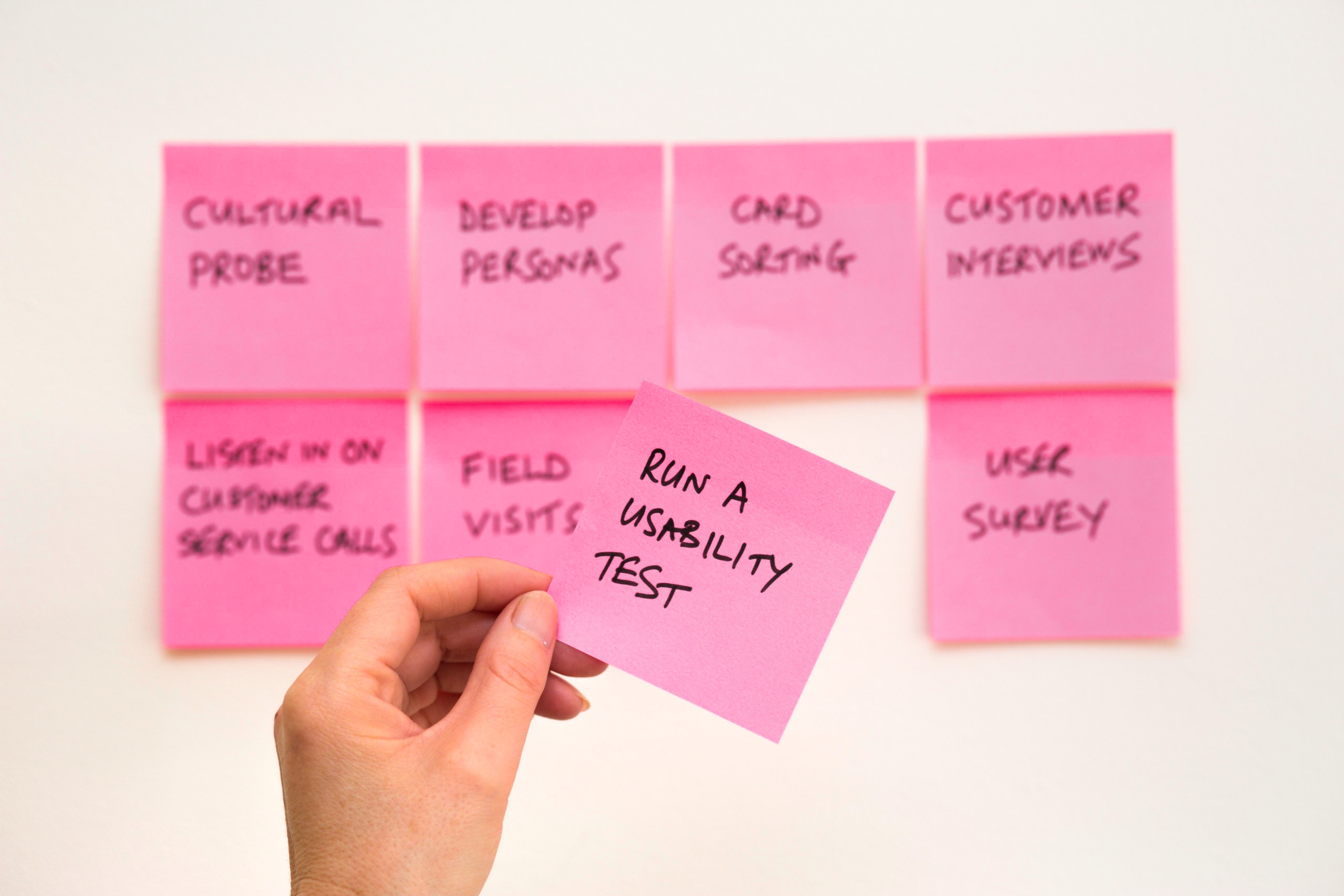The Minimum Viable Product or MVP concept is widely applied in the field website, mobile and other product developments in the IT industry, especially if the companies are new startups. The first released version is minimally designed, including vital features for the basic purpose and core functionality. This version is then tested in the market to evaluate if the product can be successful or not, making it a reasonable tool aimed at reducing development times and costs.
Launching MVP confirms that the targeted audience is interested in the product, and if testing is successful, development of the full version can be initiated through a carefully planned process.
Consider an exemplary product that takes a development time of around 8 months and requires financing worth $200,000. While the final product may appear to be impressive and make you feel satisfied with your efforts, the scenario after the product launch may be completely different. Should your product not appeal to users, all the money and time spent would be wasted. But if you adopt the MVP approach, you can launch the product in as little as one month or one and a half at the most spending a minimum amount of dollars not exceeding $15,000, and still being able to get real feedback. Once again, the launched version would only contain the most essential features that give users a fairly good idea of what the final product will be like.
![]()
What are the benefits of MVP development?
The most notable benefits of an MVP include the following.
- Saving time and money by ascertaining that you are spending resources on a worthy project
- Evaluating the extent to which a project can appeal to a certain user
- Figuring out the most desirable features and suitable approach for full product development
- Attracting potential customers and investors
How to build an MVP?
Understand the problem that has to be solved and the targeted audience
The very first step of MVP development is evaluating the business idea. Answer the following two questions.
- Why is your product needed?
- How will it solve the needs of your target audience?
Now develop an MVP goal and start selecting features that address the needs of your target audience.
Analyze competition
Conducting a competitor analysis is vital if there are other similar products in the market. But in order to launch more quickly, this step may often be missed. However, when you truly understand your competition, you can figure out the unique selling points of your product – features that are not offered by others, and doing so will make your product stand out.
Even if you cannot identify any direct competitors, you should still analyze indirect competition and the general market trends. During this phase, visit the website of your competitors, try out their apps and try to get an insight into their monthly traffic, traffic sources, and popularity in certain regions.
You can analyze similar products of your competitors as well and the feedback that they have received. This can help you in understanding the shortcomings of current solutions, and accordingly, you can offer something that is more unique and effective. In a nutshell, do take on the good ideas which your competitors have tried out and learn from the mistakes that they’ve made.
Define user flow
Concentrate on the primary goal and then start developing a user flow or navigational path. Identify the main process stages and then list down steps which help you reach the primary product goals. Instead of focusing on features, keep in mind the very basics and try to incorporate anything that will result in better user experience.
Once you have defined all the process stages, you can list down features for every one of them.

Prioritize features
Assign a priority to every feature on the list and classify them as necessary, nice to have, desirable, exceeds expectations and wanted. Begin by thinking about what your users want and then decide what you want to afford. Build a matrix that shows all process stages and features for each stage. Now assign every feature a tag or a priority – you should obviously develop the highest priority ones first.
Build and test
You can start the actual development work after all features have been identified. Perform development and testing simultaneously to reduce time and efforts.

What tips should you keep in mind?
MVP development implies finding an optimal balance between core functions, simplistic design and maximum value. While the developed basic version should indeed contain basic features, it should still encompass all of its unique selling points. If too much minimalism is targeted, then the developed product may not even be suitable for use or aligned to the needs of potential consumers.
Generally, when starting MVP development, you should add the basic essential functions. All other desirable features can be added after you’ve run initial product tests and received some kind of feedback. This will assure that you are developing a product that the users want and expect.
The Do’s
- Maintain minimum functionality, but ensure that is not deprived of high quality in any way.
- Target big markets
- Develop the product, keeping in mind the monetization model.
- Use analytics to derive trends and improve product functioning.
- Launch at the earliest possible.
- Analyze and learn from your competitors.
- Come up with an effective marketing plan that uses various methodologies to get the attention you crave.
The Don’ts
- Add unnecessary features.
- Delay entry into the market only because you want to add greater functionality.
- Re-launch the product if the MVP results aren’t favorable.
- Forget the overall practicality and viability of the product. A product is said to be viable if it meets user demands by performing any one function properly. After all, for the users, what your product does is much more important than how it does so.
What should you know when developing your Minimum Viable Product?
When you’ve finalized and gained the approval of your MVP plan, you can proceed to the actual development which is the longest phase. During this period both your programmers and designers should coordinate, crossing over the bridge between design and development effectively.
While the development process is shorter and easier to understand when compared to other IT approaches, it can still lead to failure if you aren’t aware of the following points.
Selecting the features
Which features should you include and which of them can be left out for the next version? Deciding this is probably one of the most difficult tasks that every one of you would approach differently, coming up with a varying list of potential features to include. Bear in mind that whichever ones of these you select, they should offer maximum value to your users while being aligned with the objectives of your MVP development. A general list of MVP goals includes gaining user feedback, testing assumptions, validating ideas and highlighting the potential of your product to investors.
Understand your target audience as well and then come up with a set of features that seem promising enough. If desired, you can also combine several smaller features together producing a single, greater feature that delivers the same outcome but at a lower cost or in a shorter time period. And remember that the experience of your development and design team does count here – this is something you learn with time.
When you have a complete list of features to include, add a short description and specify the development so that you get a clearer picture of the product and its timelines.
Understanding and being able to differentiate between the right and wrong ways to develop an MVP
An MVP can be developed in multiple ways, but all of them may not be the right ones. Remember that the built product should deliver the most complete user experience but only from certain minimum essential features. The basic idea here is to develop and deliver a product that allows your users to accomplish their goals more and more quickly with each new release.
Adopting agile
Agile is a popular software development methodology with a myriad of benefits. Skipping all the details, just remember that many different practices and approaches fall under the agile umbrella such as Lean, Kanban, Crystal and Scrum. Widely used for a variety of projects by tech-savvy companies, agile development methodologies boast of a higher success rate compared to the traditional waterfall approaches. Moreover, agile development has many benefits which make it the perfect approach for your MVP project.

Agile methodologies ensure that your MVP is released quickly and hits the shelves in a shorter time. During the process, there are often directional changes, but agile helps you deal with and manage all of them quite effectively. The methodology adopts change, allowing you to quickly modify your developments so that you can cater to the needs of your users more effectively.
Agile is a progressive approach, so any issues or bugs are identified and can be removed quickly. New opportunities that improve the product are also easier to determine. Agile also encourages stakeholder involvement and feedback, promoting open communication channels right from the very beginning. This results in greater engagement, and as already mentioned, better success probabilities.
Testing the application
Testing is a critical software development phase but may be neglected. Considering an MVP, the development period only lasts for around three to four months which means there are greater chances of seemingly unnecessary tasks being skipped. Testing should actually be considered as a development phase and not separately, resulting in greater effectiveness and higher quality.
.jpg)
For agile methodologies, application testing is performed continuously throughout the lifecycle of the product. Doing so ensures a considerably lower number of bugs without affecting development times negatively.
Choosing between fixed bids and hourly rates
The payment methods may not often be focused upon but they do impact the outcome of any general MVP project. The hourly rate and fixed bid techniques are related to agile and waterfall approaches, respectively. Similar to agile, the hourly rate model also introduces a number of benefits for MVP development. Better relationships are built with users and stakeholders because of greater transparency into the progress of the project. Developers, stakeholders, and users all share common goals and work with each other for an outcome that is beneficial to everyone involved. Contrary to this, profit maximization is the main objective of the fixed-rate model, and a significantly lower amount of attention is paid to user needs.
Since billing is hourly, the developers and stakeholders can change direction at any point in time even if it affects budgets and timelines if circumstances require so. Also, developers don’t have to invest too much time in identifying and mitigating. Risk management and assessment are done simultaneously as the project iterates through various processes and phases.
Which products expanded and grew bigger from their MVP versions?
Some of the biggest and most successful brands of today were initially launched as an MVP and were later on expanded into fully fledged products when they generated greater user interest and became popular.
Instagram initially launched only featured a few photo filters through which users could take pictures or apply to any of the existing images on their devices. The application received a good response and eventually involved, catering to videos, tagging hashtags, geo-locations, and several other features which that today’s Instagram version offers.
The very first version of Facebook was only meant for connecting students in a class or college and allowing them to post different messages to their individual boards. The idea had already been implemented by other similar platforms, but Facebook was the most simple of these and hence, rapidly became popular, emerging into one of the biggest social networks.
Airbnb
Airbnb was launched when the owners faced trouble in paying their rents. That is when they rented out their living room for the first time to three paying guests. The idea rapidly evolved and Airbnb was established in different countries across the globe.





